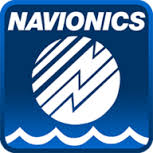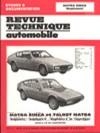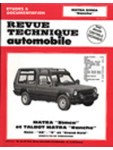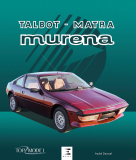E-shop
- * CD/DVD/BLU-RAY
- * Dárkové poukazy
- * Kalendáře
- * Magazíny
- * NAVIONICS
- * Plakáty a grafické listy
- * Prospekty a brožury
- * Slovníky
- ATV, čtyřkolky, sněžné skůtry
- Autobusy, tramvaje, trolejbusy
- Automobily osobní a dodávky
- _Automobilová technika
- _Autokatalogy
- _Caravaning
- _Design
- _Elektromobily & hybridy
- _Karosárny & karosáři
- _Osobnosti & konstruktéři
- _Repliky / kitcars / stavby
- _Sbírky a muzea
- _Sport
- _Veteráni
- Abarth
- AC
- Acura
- Adler
- Aero
- Africar
- Alfa Romeo
- Allard
- Allstate
- Alpine
- Alvis
- AM General
- AMC
- Americké automobily
- Apal
- Armstrong Siddeley
- ARO
- ASA
- Aston Martin
- Auburn
- Audi
- Austin
- Austin-Healey
- Austro-Daimler
- Auto Union
- Autobianchi
- Ballot
- Bantam
- Barkas
- Bedford
- Bentley
- Benz
- Berkeley
- Bitter
- Bizzarrini
- BMW
- Bond
- Borgward
- Brabham
- Bricklin
- Bristol
- British Leyland
- BRM
- Brough Superior
- BSA
- Bugatti
- Buick
- Cadillac
- Callaway
- Caterham
- Citroen
- Cisitalia
- Clan
- Colt
- Cord
- Crosley
- Crossley
- Cunningham
- Dacia
- Daewoo
- DAF
- Daihatsu
- Daimler
- Dallara
- Darracq
- Datsun
- De Dietrich
- De Dion
- Delage
- Delahaye
- DeLorean
- Denzel
- DeSoto
- De Tomaso
- Diatto
- Dixi
- DKW
- Dodge
- Duesenberg
- Eagle
- Edsel
- Elva
- EMW
- ERA
- Excalibur
- Facel Vega
- Falcon
- Ferrari
- Fiat
- Ford
- Ford USA
- Frazer-Nash
- FSO Fiat Polski
- General Motors
- Genesis
- Geo
- Ginetta
- Gilbern
- Glas
- GMC
- Goggomobil
- Goliath
- Gutbrod
- Hanomag
- Hartnett
- Healey
- Henney
- Hillman
- Hino
- Hispano Suiza
- Holden
- Hommell
- Honda
- Horch
- Hotchkiss
- Hudson
- Humber
- Hummer/Humvee
- Hyundai
- Checker
- Chevrolet
- Chrysler
- Chrysler Europe
- IFA
- Imperial
- Ineos
- Infiniti
- Innocenti
- Intermeccanica
- International
- Invicta
- ISO
- Isotta-Fraschini
- Isuzu
- Itala
- Iveco
- Jaguar
- Jawa
- Jeep
- Jensen
- Jowett
- Kaiser-Frazer
- Karmann
- KdF
- Kia
- Lada/VAZ
- Lagonda
- Lamborghini
- Lancia
- Lanchester
- Land Rover
- Laurin-Klement
- La Salle
- Lea-Francis
- Lexus
- Light Car Co.
- Ligier
- Lincoln
- Lloyd
- LMX
- Locomobile
- Lola
- London Taxi Intl.
- Lotus
- Marendaz
- Marcos
- March
- Marmon
- Maserati
- Matra-Simca
- Maybach
- Mazda
- McLaren
- Mercedes-Benz
- Mercury
- Messerschmitt
- Metalex
- MG
- Mini
- Mitsubishi
- Monica
- Monteverdi
- Moretti
- Morgan
- Morris
- Moskvič
- Muntz
- Nash
- Nissan
- Noble
- NSU
- Oldsmobile
- Oltcit
- Opel
- OSCA
- Packard
- Pagani
- Panhard
- Panoz
- Panther
- Peerless
- Pegaso
- Peugeot
- Park Ward
- Pierce-Arrow
- Plymouth
- Pontiac
- Porsche
- Praga
- Puch
- Puma
- Rambler
- Range Rover
- Reliant
- Renault
- Proton
- Railton
- Riley
- Ritter
- Riva
- Rochdale
- Rolls-Royce
- Rover
- Röhr
- Saab
- Sachsenring
- Saturn
- Scioneri
- Seat
- Shelby
- Schustala
- Simca
- Singer
- Smart
- Spyker
- Standard D
- Standard GB
- Stanguellini
- Steyr
- Studebaker
- Subaru
- Stutz
- Sunbeam
- Suzuki
- Swallow
- Syrena
- Škoda
- Talbot
- Tarpan
- Tatra
- Terraplane
- Tesla
- Tojeiro
- Toyota
- Trabant
- Trident
- Triumph
- Tucker
- TVR
- Tyrrell
- UAZ
- Unipower
- Vanwall
- Vanden Plas
- Vauxhall
- Vector
- Venturi
- Voisin
- Volha / GAZ / Čajka
- Volkswagen
- Volvo
- Walter
- Wanderer
- Wartburg
- Warszawa
- Wiesmann
- Wikov
- Westfield
- Williams
- Willys
- Wolseley
- Yugo/Zastava
- Zagato
- ZAZ
- Zbrojovka
- ZIL
- Zimmer
- Automobily nákladní a tahače
- Cyklistika
- Hudební nástroje, hudba
- Letectví, kosmonautika
- Lodě, lodní technika
- Malá motorová technika
- Modely a sběratelství
- Motocykly
- Počítače, IT
- Traktory, zemědělská technika
- Železniční technika, vlaky
- Zbraně, vojenská technika
- Zdraví, domácnost, sport


![]()



![]()


![]()

![]()

![]()



Úvod »Automobily osobní a dodávky»Dodge » Matra
Anotace
Matra Automobile was a small part of the Matra (Mechanique, Aviation et TRAction) group, a large company specialising in aerospace, defence and communications, as well as cars. It came into being in 1964 making GRP bodies for the Rene Bonnet Djet, a pretty coupe based on Renault 8 mechanicals. In 1965 Matra took over the René Bonnet company and continued to produce the Djet under its own name.
In 1967 the Djet was replaced by the 530, the first car wholly designed by Matra, powered by a mid-mounted Ford Taunus V4 engine. Matra can be said to be the pioneers of the mid-engined layout in road cars. At the same time, Matra was competing successfully in motorsport, in Formula 1, Formula 2 and Formula 3 as well as sports cars. In 1969 Sir Jackie Stewart won his first F1 World Championship in a Matra and Matra also won the constructors’ championship in the same year. In sports cars, Matra won the Le Mans 24 hour race three years in succession in 1972, 1973 and 1974. Initially Matra used Cosworth engines, but went on to develop the legendary Matra V12 engine, which continued to be used in Ligier cars after Matra pulled out of motorsport. Both the Djet and the 530 were built and sold in relatively small numbers due to the lack of a Matra dealer network. In 1973, in order to rectify this, Matra entered into a partnership with Simca in order to produce a sports car that could be sold and serviced through the Simca dealer network and thus was born the Bagheera. The Bagheera was a mid engined sports coupé using mechanical components from the Simca 1307, sold in the UK as the Chrysler Alpine. In spite of a small engine size, its light weight and aerodynamic shape gave it a lively performance. It was unique in that it had a three-abreast seating layout.
The Bagheera was followed by the Rancho, a rugged utility vehicle based on the Simca 1100 featuring six seats in three rows. It was aimed at a market that wanted a vehicle of this type but without the cost and complexity of four wheel drive. In 1979 Chrysler sold their European interests to Peugeot and the branding of the Rancho and Bagheera models was changed from Matra-Simca to Talbot–Matra. In 1980, the Bagheera was replaced by the Murena, a similar layout to the Bagheera, but with a choice of two larger engines, of 1.6 and 2.2 litres, and with a galvanised steel frame, resulting in greatly improved longevity.
In the early 1980s, Matra produced a new design for a utility vehicle to replace the Rancho. The design was offered to Peugeot who declined to put it into production. The design was then offered to Renault, who decided to market it under their own name as the Espace. Peugeot sold their stake in Matra to Renault, the Romorantin factory was turned over to Espace production for Renault in 1984 and production of the Rancho and Murena ceased. Matra continued to build the Espace for Renault until 2003, as well as the Avantime coupe, based on the Series 3 Espace, but Renault then took over Espace production themselves and the Romorantin factory was closed and has since been demolished to make way for housing. The name Matra still lives on as Matra MS, a company making battery powered transport solutions.
Internationally famous in motor racing circles since the 1960s, Matra has also produced many high performance sports cars and road vehicles. Types reported on: Djet, M530, M650, Bagheera, Murena, Rancho, Espace phase I, II, & III, Avantime, MS80, MS84, MS670B and many others. Included are new model introductions, road and comparison tests, a factory visit, full specifications & performance data plus a buyers guide. A total of 200 fully illustrated pages.













